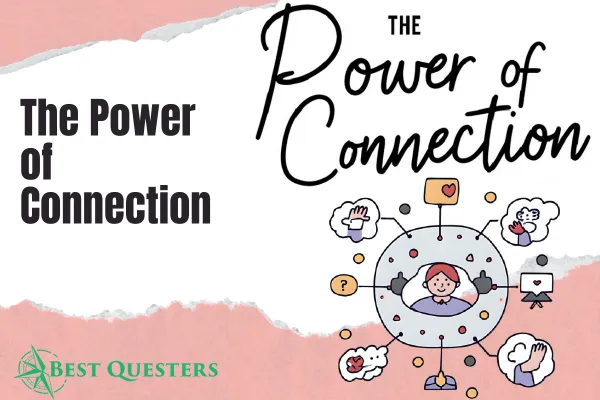
The Power of Connection – Blog Post #2
The Power of Connection – Blog Post #2
Leadership Begins at Eye Level: Connection Is the Culture
“The quality of our relationships = the quality of our lives.”
Take a moment and think of the best teacher you ever had.
Odds are, it’s not their grading policy or their pacing guide that stands out. It’s how they made you feel—seen, heard, safe, capable, valued.
Those feelings don’t come from authority. They come from influence. And that’s the heart of what we call Classroom Leadership in High Five to Thrive.
Leadership isn’t about position—it’s about moving people towards a higher vision, and it starts with connection. It's not reserved for the principal or the department chair. Leadership begins at eye level, when we choose to engage students not just as learners, but as whole people.
Some see connecting with students as something “extra.” Something nice to have… if there’s time. In reality, it’s the bedrock of making a difference, of loving our profession, of being a highly effective teacher.
You have to Maslow before you can Bloom! Before we can expect students to analyze texts, apply concepts, take risks, or persist through rigorous tasks, they need to feel safe. They need to feel like they belong.
Connection quiets the nervous system. It lowers the affective filter. It moves students out of fight, flight, or freeze and into a place where deep learning can happen.
Connection isn’t about being charismatic or having the “perfect” personality. It’s about presence. Authenticity. Intentionality. Systems that communicate safety and care.
In High Five to Thrive, we outline small but mighty practices that cultivate connection while still recognizing your limited bandwidth. We teach Classroom Leaders to:
Predict and prevent disruptions rather than react to them.
Use diffusers to maintain composure and protect relationships.
Treat misbehavior as a growth opportunity, not a character flaw.
Cultivate a belonging culture
Inspire intrinsic motivation, collaboration and engagement
Why? Because classrooms run best on trust, not tension. When students feel emotionally secure, they’re more likely to take risks, try again, and trust your guidance.
So many teachers are carrying the weight of discipline issues, professional fatigue and a sense that their best efforts aren’t enough. We see you. We are you.
That’s why we believe in reclaiming teaching as a leadership role!
A Classroom Leader doesn’t just manage behavior—they inspire belonging. They don’t just assign tasks—they model purpose. They don’t go it alone. They create rituals, routines, and a culture that values and optimizes each person’s potential.
Let’s return to that idea of presence. What does it mean to show up as a leader each day?
It means stepping into your classroom as someone who holds a clear vision of what your students can become—even when they don’t see it yet.
It means anchoring your authority in care, not control.
It means believing that every student is a “10”—even on days when they’re acting like a “2.”
And it means recognizing that connection isn’t soft. It’s strong. It’s strategic. It’s the path to better behavior, deeper learning, and a healthier school climate where achievement is an everyday reality.
We know students need connection more than ever, and so are teachers. We are relational beings!. And when we shift from classroom manager to Classroom Leader, we create spaces that restore our own sense of purpose.
Let’s stop asking teachers to hold it all together with evidence-based instruction and superglue. Let’s give them something better:
A leadership model grounded in human connection.
A culture built on safety, trust, and vision that positions people to thrive.
A community where every person—teacher and student alike—feels like they belong.
Connection isn’t a soft skill.
It’s a survival skill.
It’s a leadership skill.
It’s the skill that makes everything else possible.
